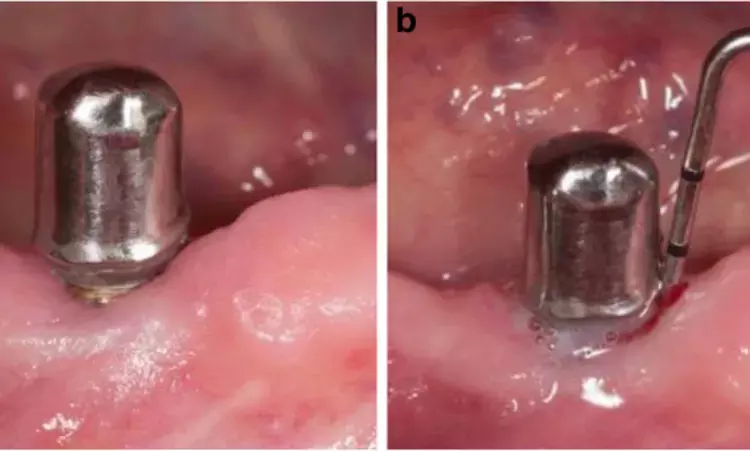- Home
- Medical news & Guidelines
- Anesthesiology
- Cardiology and CTVS
- Critical Care
- Dentistry
- Dermatology
- Diabetes and Endocrinology
- ENT
- Gastroenterology
- Medicine
- Nephrology
- Neurology
- Obstretics-Gynaecology
- Oncology
- Ophthalmology
- Orthopaedics
- Pediatrics-Neonatology
- Psychiatry
- Pulmonology
- Radiology
- Surgery
- Urology
- Laboratory Medicine
- Diet
- Nursing
- Paramedical
- Physiotherapy
- Health news
- Fact Check
- Bone Health Fact Check
- Brain Health Fact Check
- Cancer Related Fact Check
- Child Care Fact Check
- Dental and oral health fact check
- Diabetes and metabolic health fact check
- Diet and Nutrition Fact Check
- Eye and ENT Care Fact Check
- Fitness fact check
- Gut health fact check
- Heart health fact check
- Kidney health fact check
- Medical education fact check
- Men's health fact check
- Respiratory fact check
- Skin and hair care fact check
- Vaccine and Immunization fact check
- Women's health fact check
- AYUSH
- State News
- Andaman and Nicobar Islands
- Andhra Pradesh
- Arunachal Pradesh
- Assam
- Bihar
- Chandigarh
- Chattisgarh
- Dadra and Nagar Haveli
- Daman and Diu
- Delhi
- Goa
- Gujarat
- Haryana
- Himachal Pradesh
- Jammu & Kashmir
- Jharkhand
- Karnataka
- Kerala
- Ladakh
- Lakshadweep
- Madhya Pradesh
- Maharashtra
- Manipur
- Meghalaya
- Mizoram
- Nagaland
- Odisha
- Puducherry
- Punjab
- Rajasthan
- Sikkim
- Tamil Nadu
- Telangana
- Tripura
- Uttar Pradesh
- Uttrakhand
- West Bengal
- Medical Education
- Industry
Ultrasonography useful Noninvasive Method for Assessing Keratinized Mucosal Width at dental Implant Sites

Ultrasonography useful Noninvasive Method for Assessing Keratinized Mucosal Width at Implant Sites suggests a new study published in the Journal of Periodontology
Peri-implant keratinized mucosa (KM) has been put forth as having a protective role against peri-implant disease, and it is essential for esthetic outcomes. Traditionally, keratinized mucosa width (KMW) has been linearly assessed by using periodontal probes, which may not be highly accurate and cannot reflect the keratinized tissue volume in thick and bulky soft tissue. In this study, a non-ionizing, high-frequency, and real-time ultrasound device was used to examine the KMW changes between baseline and 12 months after soft tissue augmentation at 28 implant sites exhibiting peri-implant soft tissue dehiscence. High-frequency ultrasonography (HFUS) has been demonstrated to be highly accurate in assessing periodontal and peri-implant structures compared with histology and CBCT measurements in recent years. In this study, the KMW was assessed based on the echointensity of the keratinized epithelium, and that result was compared with the clinical measurement by a periodontal probe. In other words, the keratinized epithelium was visualized as a thick hyperechoic line on the ultrasound scans and can be discriminated from the alveolar mucosa, which lacks a hyperechoic border. In particular, this method has the advantage of visualizing the increased profile (volume) of the augmented soft tissue. In the resulting analyses, HFUS linear assessment showed a similar KMW to that shown with the clinical assessment by a periodontal probe, both at baseline and 12 months. The KM profile (surface distance from soft tissue margin to the alveolar mucosa) assessed by HFUS at 12 months was significantly greater than that determined with linear measurements by HFUS and periodontal probe. The greater the mucosa thickness (MT), the greater the difference was between surface distance and linear measurements by HFUS. The authors concluded that, in cases with augmented soft tissue with MT >2.51 mm, the linear measurements by HFUS (or by the probe) can underestimate the KM width by >1 mm. Although dental ultrasonography by far has limited popularity due to its learning curve and high cost, with the growing interest in peri-implant phenotype modification among the clinical research community, HFUS undoubtedly provides a unique tool to accurately evaluate the KW gain by assessing the soft tissue profile (volume) in addition to linear measurement.
Reference:
Tavelli, L, Yu, N, Mancini, L, Barootchi, S. Keratinized mucosa width assessment at implant sites using high-frequency ultrasonography. J Periodontol. 2023; 1- 11. https://doi.org/10.1002/JPER.23-0014
Dr. Shravani Dali has completed her BDS from Pravara institute of medical sciences, loni. Following which she extensively worked in the healthcare sector for 2+ years. She has been actively involved in writing blogs in field of health and wellness. Currently she is pursuing her Masters of public health-health administration from Tata institute of social sciences. She can be contacted at editorial@medicaldialogues.in.
Dr Kamal Kant Kohli-MBBS, DTCD- a chest specialist with more than 30 years of practice and a flair for writing clinical articles, Dr Kamal Kant Kohli joined Medical Dialogues as a Chief Editor of Medical News. Besides writing articles, as an editor, he proofreads and verifies all the medical content published on Medical Dialogues including those coming from journals, studies,medical conferences,guidelines etc. Email: drkohli@medicaldialogues.in. Contact no. 011-43720751


